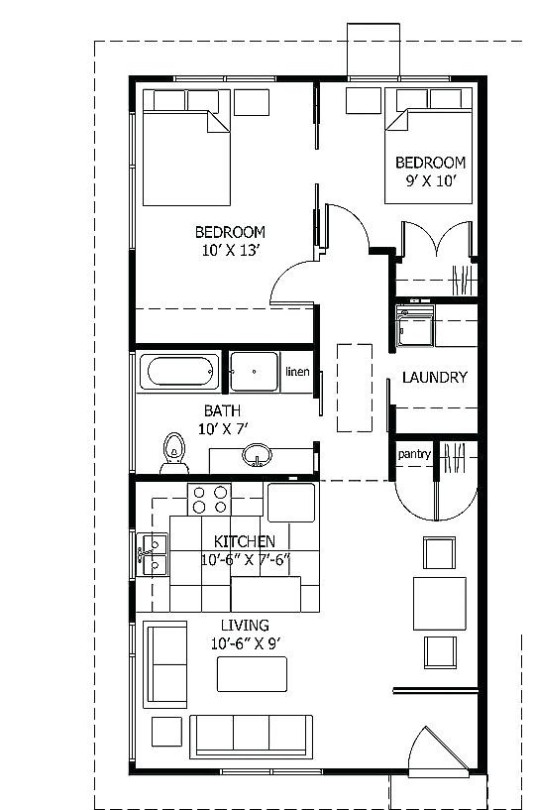Text
MIPP Matters to Hotels in California and it Should Matter to You too.
First and foremost MIPP is an acronym formulated by the State of California which stands for "Musculoskeletal Injury Prevention Program". We have our own MIPP you can adopt now.
With summer coming to an end and still many making plans to travel to California to take in the best natural and historical sites this side west of the Mississippi, the hotel industry will reach peak capacity as families, backpackers, couples and all wanderlust travelers book up their travel plans in the coming months.
For the hotel industry, business isn’t just good ‐ it’s great. But with occupancy rates climbing higher each year, the hotel industry struggles to maintain the staffing it needs to ensure smooth operations and to meet growing demand for rooms and beds. But with these increased demands, hotel operators and owners must heed Cal/OSHA’s recent regulations requiring them to address the types of repetitive motions and stress‐related injuries commonly sustained by housekeepers. The new law requires employers to implement a written policy and undertake a site‐specific, initial worksite evaluation to identify and address the types of musculoskeletal injuries housekeepers may sustain in their jobs. On top of these regulations, several cities within California, including Oakland and Long Beach, have proposed measures taking these requirements one step further. For instance, Oakland’s initiative, titled “Measure Z,” creates a number of key restrictions on the amount of work a housekeeping employee can perform, including restrictions on the number of hours, square footage they can clean in a day which itself can vary based on the number of rooms they clean in a shift. For the text of Measure Z, click on the link below:
https://www.acvote.org/acvote%E2%80%90assets/02_election_information/PDFs/20181106/en/Measures/22%20%E2%80%90%20Measure%20Z%20%E2%80%90%20City%20of%20Oakland.pdf

Where does one start to ensure compliance with these requirements? With little guidance from the bodies that enacted the ordinance, ensuring compliance can be a confusing undertaking even for the most experienced hotel operators. Keeping this in mind, on the next page we have included a few tips to start thinking about your operations and how they fit within the larger scheme of the new ordinances.
Get a handle of the square footage you’re working with...
Review the drawings of your facility. Create a plan for how you can divide up to the 4,000 square feet requirement. Call each divided spot a “Zone” and assign employees their designated zone. If one zone is undersold or has less turnover in a day, have that employee assist another employee in a zone that is overbooked. Although this may be a bit of a chess game, it is a good start to see how to work the board to ensure your employees are working within requirements.

Evaluate the tasks performed by housekeeping employees...
It’s important to evaluate and understand what types of tasks each housekeeping employee accomplishes on a daily basis. Oftentimes housekeeping employees are engaged in a variety of different tasks when they turn over a room. Some housekeepers are also tasked with cleaning some general areas like the bathrooms, the lobby, or conference rooms. But if an employee performs just one or two tasks throughout the day, the risk of a musculoskeletal injury is much higher because of the repetition in performing the same tasks and reduced range of motion required of them. Consider breaking up the employee’s tasks so that they are not focused on long‐term, repetitive motions.
Do you have the right number of staff?
The number of housekeeping staff is critical. As a rule of thumb, if housekeeping employees need to clean more than 4,000 square feet on a routine basis, you probably don’t have enough staff. Of course there are challenges with people calling in sick, the number of rooms that need to be turned over and other elements that may make it infeasible to ensure employees are cleaning less than 4,000 square feet every day. Having on‐call employees or part‐time employees fill in may be a helpful option.
Consider these tips as you contemplate your staffing needs for the summer. Of course, these tips are not intended to be legal advice, and you should consult with an attorney experienced in Cal/OSHA law.
To find out more about Worksite Evaluations and Risk Assessments, Effective MIPP Training and Compliance Solutions, contact Team Accurate by clicking on our logo below.

0 notes
Photo

According to OSHA and NIOSH, the #1 thing employers should focus on, is “Protecting the musculoskeletal system of employees.” Is your company doing everything possible and required by OSHA to protect your employees from soft-tissue and spinal injuries?
The main goal of health and safety programs is to prevent workplace injuries and illnesses, as well as the suffering and financial hardship these events can cause for employers, workers and their families. Once a safety and health program is established, it should be evaluated periodically and at least annually to verify what is working and what is not, and whether a program is on track to achieve positive outcomes.

The General Duty Clause requires employers to provide their employees with a workplace free from recognized hazards likely to cause serious physical harm. One of the "root causes" of workplace injuries is the failure to identify or recognize hazards and risk that are present, or that could have been anticipated. A proactive, ongoing process to identify and assess workplace hazards and risk includes a work site evaluation and musculoskeletal risk assessment designed to prevent costly injuries.
Title 8, Section 3203 (IIPP) states than employers should perform periodic assessments to ensure their injury prevention program is up to date and effective. This should occur at least annually, whenever new tools or equipment are introduced, a process changes, and when a new hazard or risk factor is discovered as the result of an injury or incident investigation. Section 5110 (RMI - Repetitive Motion Injuries) also requires employers to evaluate risk and provide training whenever there is more than one RMI in the last 365 days, caused by an identical work activity.
Accurate Ergonomics (AE) is the perfect resource to ensure compliance and prevent loss. An AE worksite evaluation and musculoskeletal risk assessment will identify your worksite’s strengths, highlight areas for improvement and provide an opportunity to implement effective control measures, including changing workforce behaviors.
Has it been a year or longer since your last worksite evaluation? You owe it to your company, workforce and bottom-line to have AE’s musculoskeletal injury prevention specialists perform an assessment. No matter where your company currently stands regarding health and safety excellence, AE will help you raise your health and safety bar even higher.
Take the Accurate Ergonomics challenge today. Our specialists will provide an objective analysis of your injury history, measure behaviors and risk against performance objectives, and share a report of findings and control measure recommendations with stakeholders.
With budget season approaching fast, an AE risk assessment will allow you to plan for total success.
1 note
·
View note